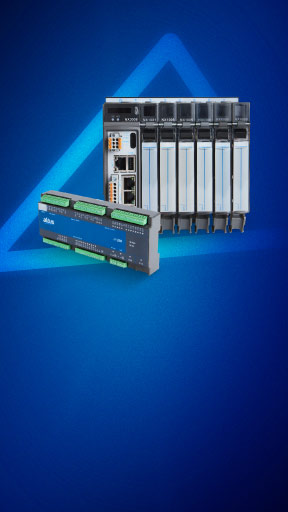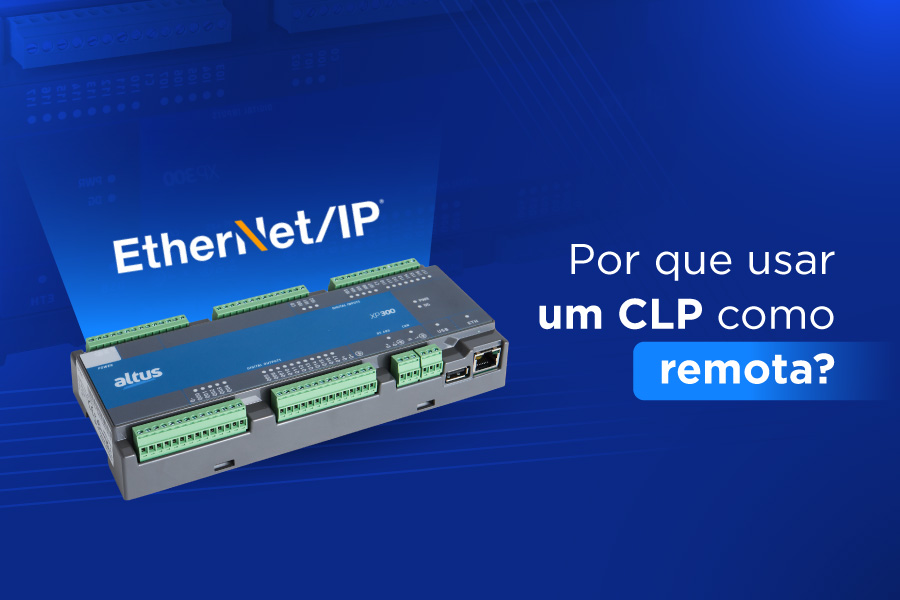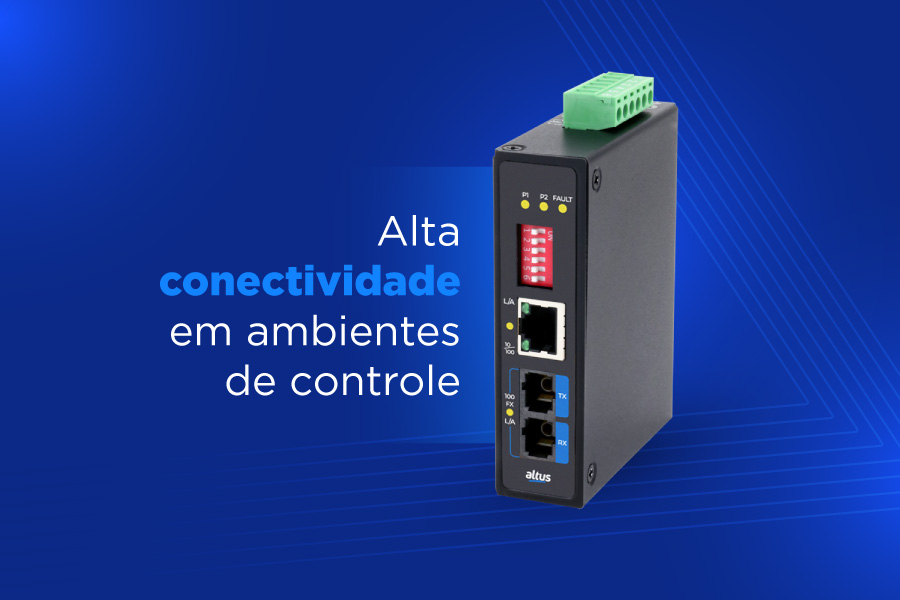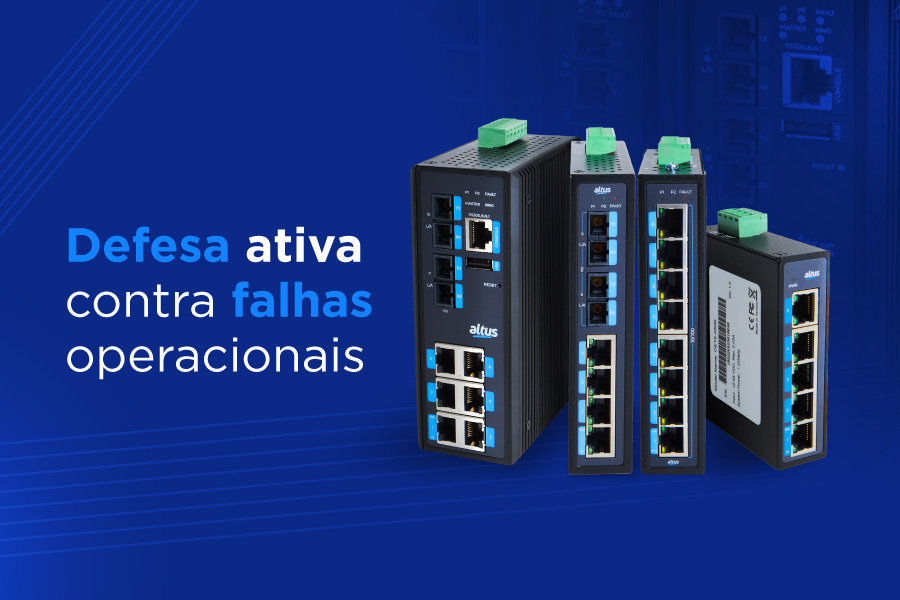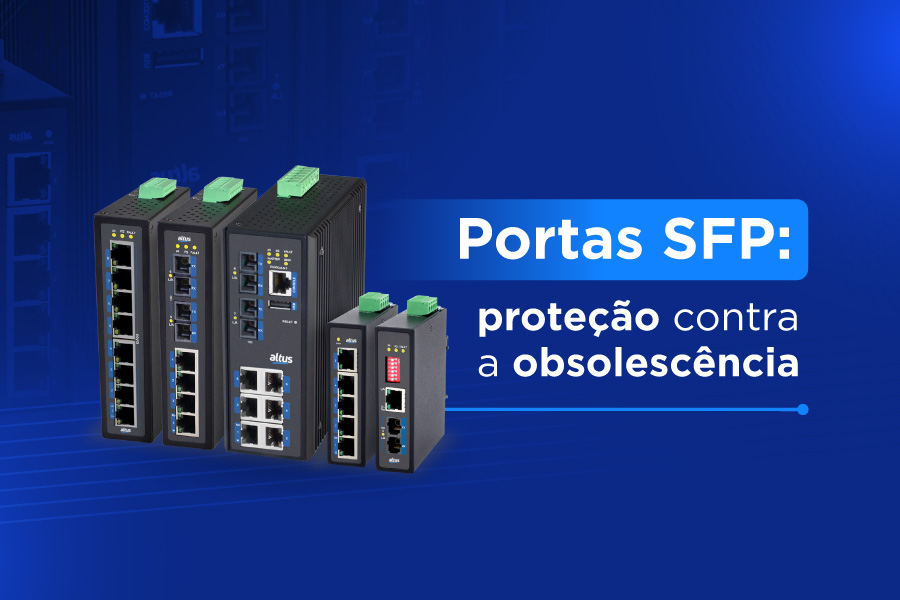A interconectividade entre sistemas e máquinas tem avançado cada vez mais nos variados setores da indústria. Você, que está lendo este artigo agora, já deve ter presenciado ou mesmo aplicado algumas soluções para melhorar a coleta de dados e a integração entre os sistemas da sua empresa.
Por vezes, a simples implementação de novas rotinas já é suficiente para fazer diferentes processos conversarem. Porém, a maioria dos equipamentos de controle e aquisição de dados em operação na indústria não possui a tecnologia necessária para realizar essas tarefas. Criados para atender às demandas da Indústria 4.0, os CLPs compactos da solução Nexto Xpress contam com recursos avançados de comunicação capazes de conectar diferentes máquinas e processos ao universo IoT.
Desenvolvida pela equipe de P&D da Altus, a solução conta com suporte a uma grande variedade de protocolos de comunicação, o que lhe permite interagir com diferentes tipos de dispositivos da indústria. Dentre estes protocolos, três se destacam por sua capacidade de diálogo com múltiplos equipamentos e sistemas IoT: OPC UA, MQTT e CANOpen.
Veja, a seguir, como estes protocolos se diferenciam e porque eles são amplamente utilizados em aplicações para coleta de dados e integração de processos no ambiente da Indústria 4.0.
OPC UA
Surgido em 2008 através de uma iniciativa envolvendo diferentes empresas do segmento tecnológico, entre elas a Microsoft, o padrão foi criado para garantir a interconexão de dispositivos inteligentes do chão de fábrica, melhorando o fluxo de troca de informação e aumentando a agilidade de análise de cenários.
Como seu próprio nome diz, o OPC UA é uma plataforma de comunicação aberta (Open Platform Communications), o que faz com que opere sob qualquer sistema operacional e em qualquer plataforma de hardware, como PC, servidores em nuvem e CLP. O protocolo é compatível com firewalls e fornece um conjunto de controles, como criptografia de sessão, autenticação, controle de usuário, entre outros. O padrão ainda conta com uma arquitetura multi-camadas com estrutura preparada para incorporar futuras inovações tecnológicas.
Em um contexto industrial, o protocolo pode ser utilizado para realizar a conexão entre o CLP e o sistema supervisório, como o SCADA/HMI BluePlant, que, aliás, acaba de ganhar uma nova atualização. Neste contexto, o CLP seria responsável por fornecer as informações necessárias para basear a tomada de decisão dos operadores da planta e por receber as instruções de ajuste para os dispositivos de campo.
Veja mais sobre o OPC UA e seus diferenciais para a conectividade na Indústria.
MQTT
Desenvolvido pela IBM no final dos anos 1990 com base em TCP/IP, o MQTT (Message Queue Telemetry Transport), como seu nome sugere, é um protocolo de mensagens com suporte à comunicação assíncrona entre as partes, ou seja, desacopla o emissor e o receptor da mensagem tanto no espaço quanto no tempo. O padrão tem estrutura baseada em broker (intermediador), o que permite que um cliente MQTT possa se inscrever e publicar em tópicos, ao passo que esses tópicos são gerenciados pelo broker e repassados para os clientes. Isto é, quando um cliente publica uma mensagem em um determinado tópico, o broker repassa estas mensagens a todos os clientes inscritos para ele.
Diferente de outros protocolos baseados em HTTP, que apresentam importantes problemas de velocidade, confiabilidade e desempenho em ambientes IoT, o MQTT é altamente confiável e opera com grande desenvoltura, o que faz dele um dos padrões mais utilizados para comunicação com a nuvem e aplicações web.
Acesse um artigo onde detalhamos melhor o protocolo MQTT.
CANOpen
Criado em 1994 por um grupo de empresas, a CANOpen é uma das redes industriais mais completas e diversificadas do mercado atualmente. Por operar em um padrão de comunicação multimestre, a rede atende aos mercados com alto requisito de complexidade e segurança de dados. Esse modelo multimestre também dá agilidade à comunicação entre os dispositivos da aplicação e simplifica o trabalho da rede.
Por ser um padrão internacional de baixo custo, presente em diversos equipamentos de mercado, o CANOpen pode ser utilizado para realizar a comunicação entre o Xpress e os mais variados dispositivos de campo inteligentes, como inversores de frequência, sensores magnéticos, posicionadores, motores, entre outros. Desta forma, o CLP pode receber instruções do sistema de supervisão através do protocolo OPC UA e transmiti-las aos equipamentos de campo por meio do CANOpen.
Conheça algumas das funcionalidades para interface CAN nos CLPs Nexto Xpress.
Saiba mais sobre os CLPs Nexto Xpress
 Primeira linha de controladores programáveis da Altus preparada para atender às demandas da Indústria 4.0, a solução Nexto Xpress possui quatro opções de modelos que se diferenciam em número de pontos e recursos: XP300, XP315, XP325 e XP340. Todos contam com 16 entradas digitais, 16 saídas digitais a transistor, uma porta Ethernet, outra Serial padrão RS-485 e uma do tipo CAN, porém, o CLP XP315 ainda possui 2 entradas analógicas RTD de dois e três fios e 5 entradas analógicas para tensão e corrente. Já o modelo XP325 possui todos estes recursos acrescidos de 4 saídas analógicas, mesmas funcionalidades presentes no modelo XP340, que ainda conta com suporte a WebServer.
Primeira linha de controladores programáveis da Altus preparada para atender às demandas da Indústria 4.0, a solução Nexto Xpress possui quatro opções de modelos que se diferenciam em número de pontos e recursos: XP300, XP315, XP325 e XP340. Todos contam com 16 entradas digitais, 16 saídas digitais a transistor, uma porta Ethernet, outra Serial padrão RS-485 e uma do tipo CAN, porém, o CLP XP315 ainda possui 2 entradas analógicas RTD de dois e três fios e 5 entradas analógicas para tensão e corrente. Já o modelo XP325 possui todos estes recursos acrescidos de 4 saídas analógicas, mesmas funcionalidades presentes no modelo XP340, que ainda conta com suporte a WebServer.
Assim como os demais membros da família Nexto, o CLP Xpress também utiliza a plataforma tecnológica CODESYS com configuração via MasterTool IEC XE, software GRATUITO de programação da série com escalabilidade para projetos de micro a grande porte.
Confira mais detalhes sobre os produtos da solução Nexto Xpress.
